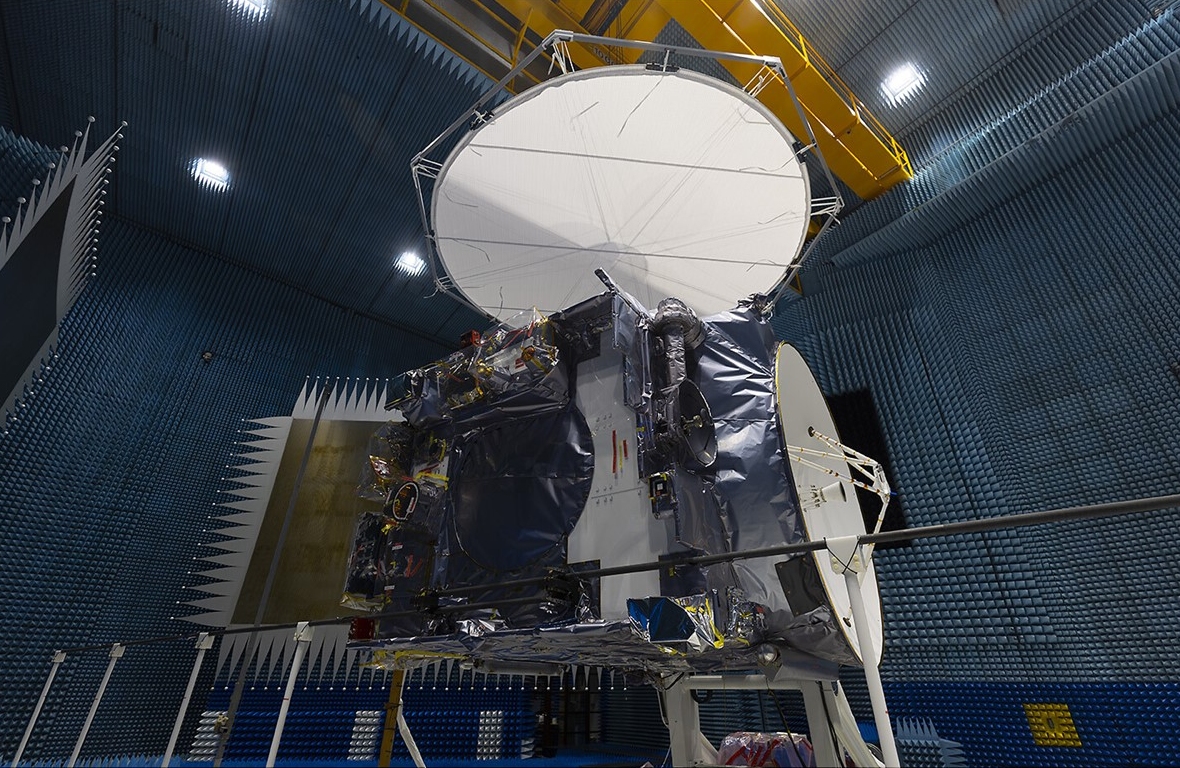The ESA’s Jupiter Icy Moons Explorer mission — ‘Juice’ — successfully launched today from Europe’s spaceport in Kourou, French Guiana.
The launch was supposed to take place yesterday but was postponed due to poor weather conditions.
Today, the stars aligned and Juice was successfully blasted into orbit at approximately 14:19 CEST.
It took only two minutes for the Ariane 5 rocket to transport Juice into space, shortly after which it separated from the satellite, which now begins its 8-year journey to Jupiter.
<iframe title="Juice liftoff" width="500" height="281" srcdoc="*{padding:0;margin:0;overflow:hidden}html,body{background:#000;height:100%}img{position:absolute;top:0;left:0;width:100%;height:100%;object-fit:cover;transition:opacity .1s cubic-bezier(0.4,0,1,1)}a:hover img+img{opacity:1!important}

 ” frameborder=”0″ allow=”accelerometer; autoplay; clipboard-write; encrypted-media; gyroscope; picture-in-picture; web-share” allowfullscreen>[embedded content]
” frameborder=”0″ allow=”accelerometer; autoplay; clipboard-write; encrypted-media; gyroscope; picture-in-picture; web-share” allowfullscreen>[embedded content]
Juice will make the 6.6 billion km trip to study three of Jupiter’s 92 known moons: Ganymede, Callisto, and Europa. Each of these worlds has an ocean of water hidden underneath an icy shell — an important target for astronomers searching for life beyond Earth.
In the two weeks after launch, the satellite will deploy all of its antennas and instrument booms. This will be followed by a three-month long period where all of the spacecraft’s scientific instruments will be commissioned.
It will take even longer for its first fly-by, which is only set for August 2024. At that time, it will fly by the Moon and then Earth about one and a half days later. The satellite will take advantage of the Earth-Moon gravitational field to sling itself on course for Jupiter.
Juice is set to arrive at Jupiter in July 2031. Once it arrives it will spend three and a half years orbiting the gas giant and making close fly-bys of three of its moons.


In December 2023, the spacecraft will change orbits moving from Jupiter to Ganymede. By doing so, Juice will become the first satellite ever to orbit around a moon other than Earth’s.
But it won’t be alone out there. NASA is also launching a Jupiter-bound spacecraft, the Europa clipper, in 2024, that will orbit Europa.
Norbert Krupp, an interdisciplinary scientist at the Juice programme, says the presence of NASA’s satellite is perfect timing and “allows for a two-point comparison of data” that will improve the overall impact of the mission.
Juice is equipped with 10 instruments that aim to give scientists a look not just at the surface of Jupiter and its icy moons, but what lies beneath. The hope is that this will allow for the creation of computer-generated, three dimensional images of its interior.
The satellite will use radar to look into the moons, lidar to create 3D maps of their surfaces, and magnetometers to explore their intricate electrical and magnetic environments. Other sensors will collect data on the whirling particles that surround the moons, and cameras will send back countless pictures to Earth.


Dr Caroline Harper, the head of space science at the UK Space Agency, believes it will confirm the existence of salty oceans beneath the surface of Ganymede.
“JUICE is not in itself designed to look for life on an icy moon, but if we’re going to find life elsewhere in the solar system, chances are it’s going to be underneath the ice, if there is an ocean, underneath the ice on one of those moons,” she said.
“So it’s going to be very exciting to look and see whether we do find what we expect to find, whether there are salty oceans under the icy crust that could contain the conditions that support life”.
Scientists are interested in Jupiter’s moons because they appear to harbour massive oceans of liquid water hidden by tens of miles thick shells of ice, and these oceans might possess favourable conditions for some form of life to exist.
Although Juice is unlikely to find evidence of life on Jupiter’s moons, the mission will help scientists better understand whether the right conditions for life exist on these moons or not.
Juice mission controllers plan to dispose of the spacecraft by crashing it onto the surface of Ganymede. This controlled destruction will prevent Juice from turning into a piece of space junk that could collide with future missions.
The €1.6 billion launch of Juice comes after a series of setbacks for Europe’s launches, the most notable of which was the launch failure of Vega-C in December 2022.
However, on a more positive note, new research shows that Europe overtook the US in spacetech investment in the first quarter of this year, making it the world’s biggest market for private spacetech funding.
The hope is that this funding will boost Europe’s domestic space capabilities, and offer startups the propulsion they need to scaleup.
Services Marketplace – Listings, Bookings & Reviews